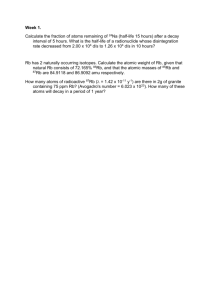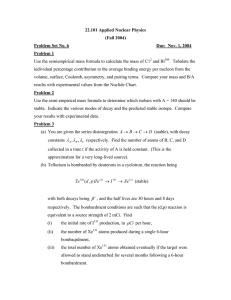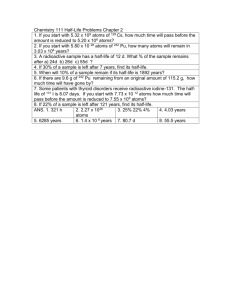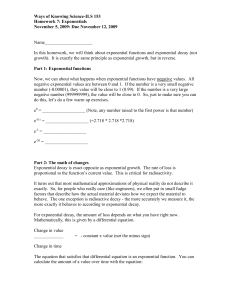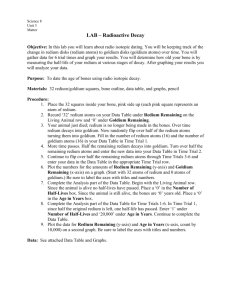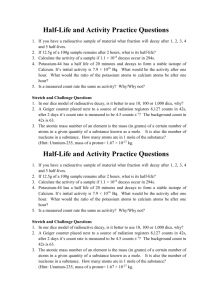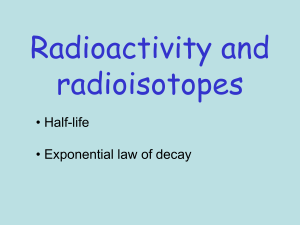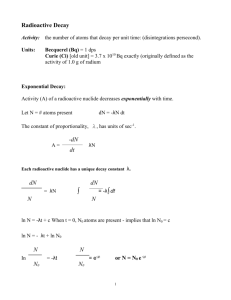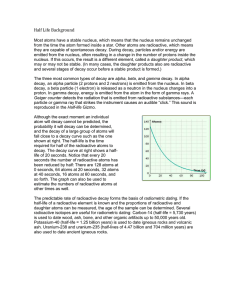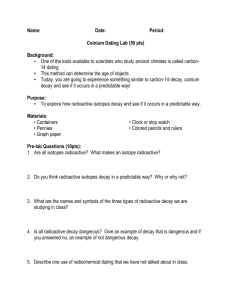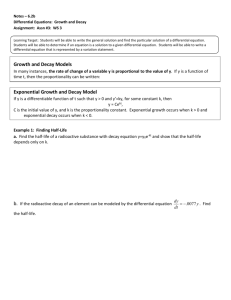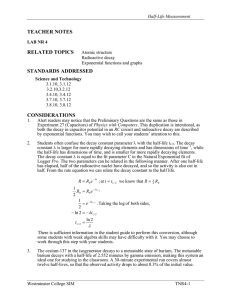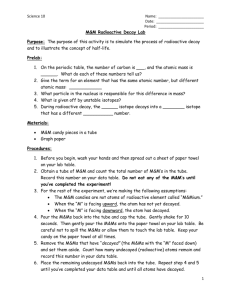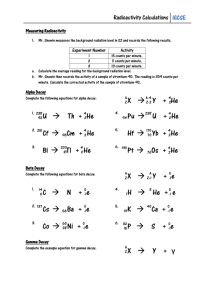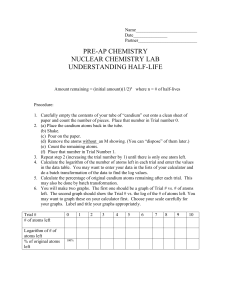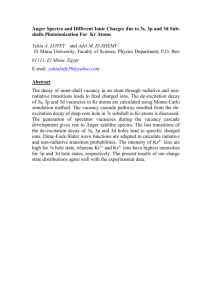TAP 516-1: Decay in theory and practice
advertisement
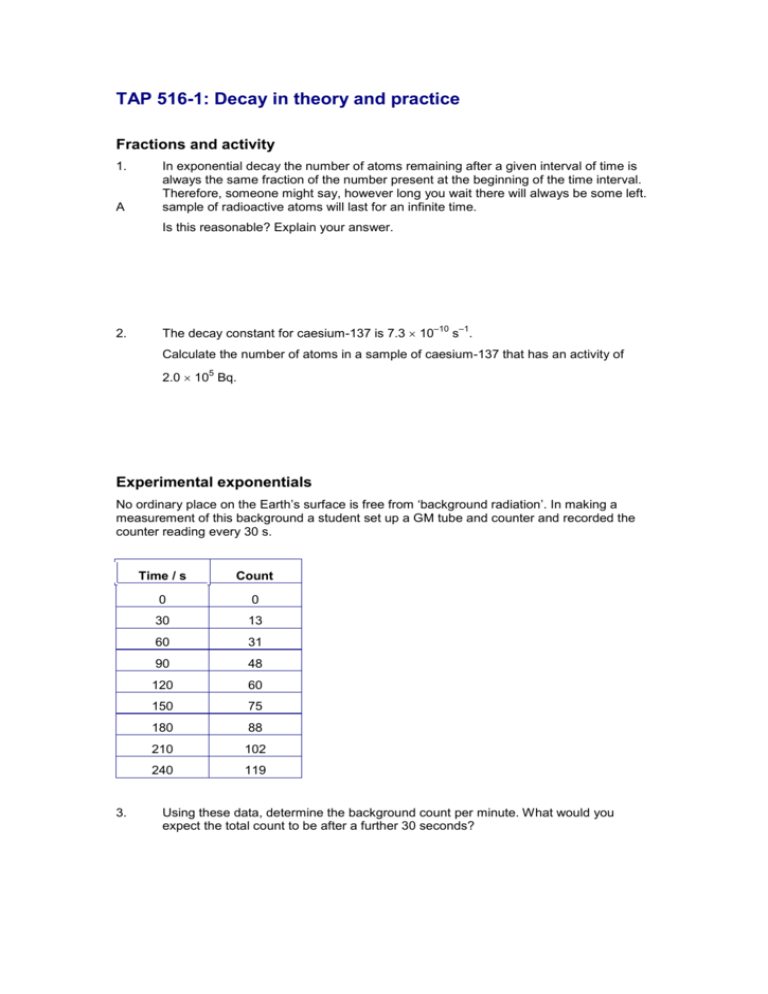
TAP 516-1: Decay in theory and practice Fractions and activity 1. A In exponential decay the number of atoms remaining after a given interval of time is always the same fraction of the number present at the beginning of the time interval. Therefore, someone might say, however long you wait there will always be some left. sample of radioactive atoms will last for an infinite time. Is this reasonable? Explain your answer. 2. –10 The decay constant for caesium-137 is 7.3 10 –1 s . Calculate the number of atoms in a sample of caesium-137 that has an activity of 5 2.0 10 Bq. Experimental exponentials No ordinary place on the Earth’s surface is free from ‘background radiation’. In making a measurement of this background a student set up a GM tube and counter and recorded the counter reading every 30 s. 3. Time / s Count 0 0 30 13 60 31 90 48 120 60 150 75 180 88 210 102 240 119 Using these data, determine the background count per minute. What would you expect the total count to be after a further 30 seconds? A radioactive source is set up in front of the same GM tube in the same laboratory. Counter readings of the activity of the source are taken for 1 minute at time intervals of 1 hour. Time / h A / counts min–1 0 828 1 510 2 320 3 202 4 135 5 95 6 70 7 51 8 41 9 38 10 37 11 31 12 33 13 34 14 29 15 35 4. What action should be taken to deal with the background count? 5. Plot a graph to show how the activity of the radioactive substance changes with time and derive from it three different values of the half-life. Calculate the mean of these. 6. Worried by the obvious fluctuations in the final hours of the count, one student suggests that it might be wise to continue counting for at least as long again. Is this a good idea? Explain your answer. 7. There is a slight increase in the count rate towards the end of the experiment. Is this significant? Explain your answer. 8. Suggest steps you might take to improve the experiment. Practical advice This question compares the theoretical exponential decay with the messy practical situation. This comparison can be used to bring out some of the characteristics of the models. Answers and worked solutions 1. No. The smooth exponential model provides a good description only when there are a very large number of atoms. However, when the sample is reduced to a few atoms, the model is a poor fit. How long an atom will last on average is known, but it is not possible to say how long one particular atom will last. 2. dN N dt N – dN / dt activity 2.0 10 5 Bq 2.7 10 14 atoms 7.3 10 10 s 1 3. 119 counts 30 counts min 1 4 minutes After further half minute count 119 30 / 2 134 counts . background count –1 4. Subtract the background count from each of the tabulated counts min . 5. The half-life is about 80 minutes. 6. The count rate would not change significantly if the counting were continued for a longer period. Very little of the substance remains after 8 hours. 7. No; random fluctuations in the background count rate are probably responsible for this increase. 8. The experiment could be repeated and readings taken at intervals closer than 1 hour during the first few hours. External reference This activity is taken from Advancing Physics chapter 10, 30S
